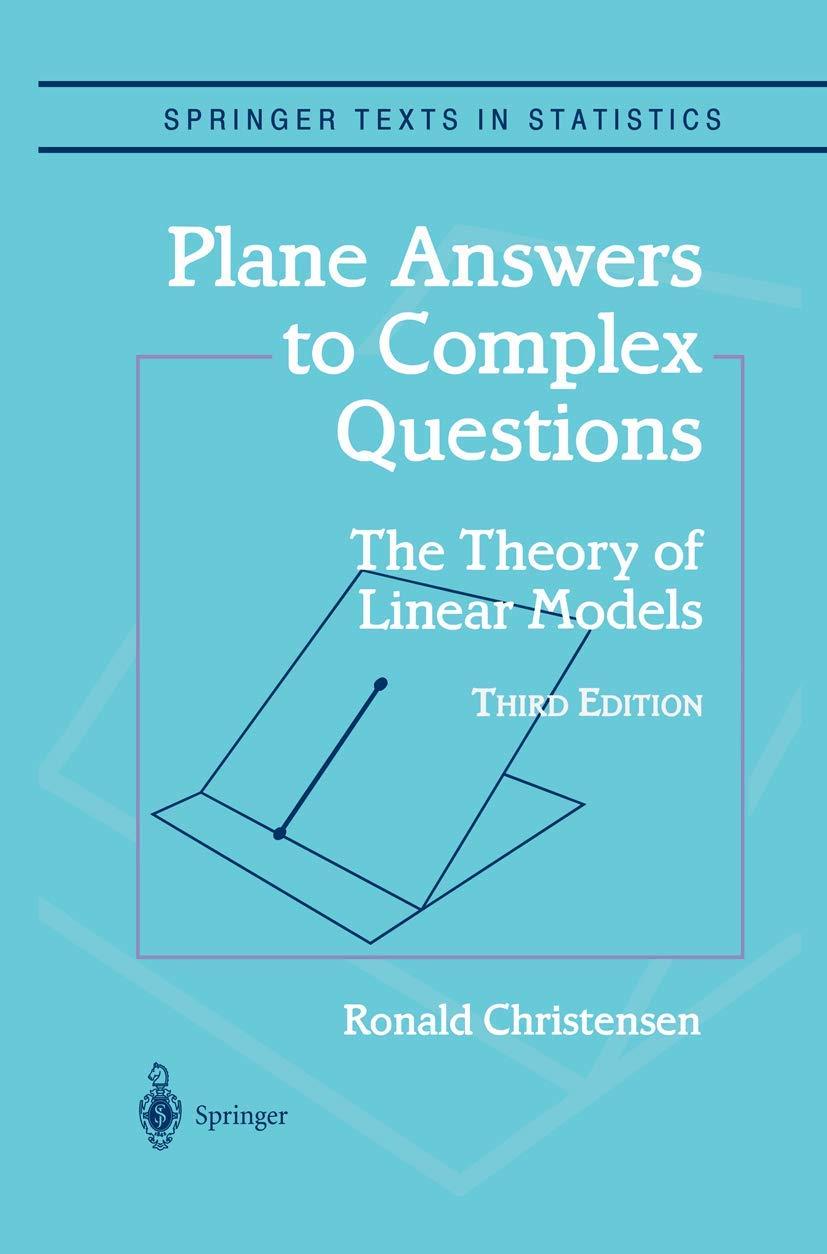Consider the model Yijk = J.L + Qi + 'Tlj + tij + eijk, i = 1,2,3,4,
Question:
Consider the model Yijk = J.L + Qi + 'Tlj + "tij + eijk, i = 1,2,3,4, j = 1,2,3, k = 1, ... , Nij , where for i # 1 # j, Nij = Nand Nu = 2N. This model could arise from an experimental design having Q treatments of No Treatment (NT), al, a2, a3 and 'Tl treatments of NT, bll b2 . This gives a total of 12 treatments: NT, al, a2, a3, bl , al bl , a2bll a3bl b2 , al b2 , a2b2, and a3b2' Since NT is a control, it might be of interest to compare all of the treatments to NT. If NT is to play such an important role in the analysis, it is reasonable to take more observations on NT than on the other treatments. Find sums of squares for testing
(a) no differences between al, a2, a3,
(b) no differences between bl , b2 ,
(c) no {al,a2,a3} x {bl ,b2} interaction,
(d) no differences between NT and the averages of aI, a2, and a3 when there is interaction,
(e) no differences between NT and the average of aI, a2, and a3 when there is no interaction present,
(f) no differences between NT and the average of bl and b2 when there is interaction, (g) no differences between NT and the average of bl and b2 when there is no interaction present.
Discuss the orthogonality relationships among the sums of squares. For parts
(e) and (g), use the assumption of no interaction. Do not just repeat parts
(d) and (f)!
Step by Step Answer:







